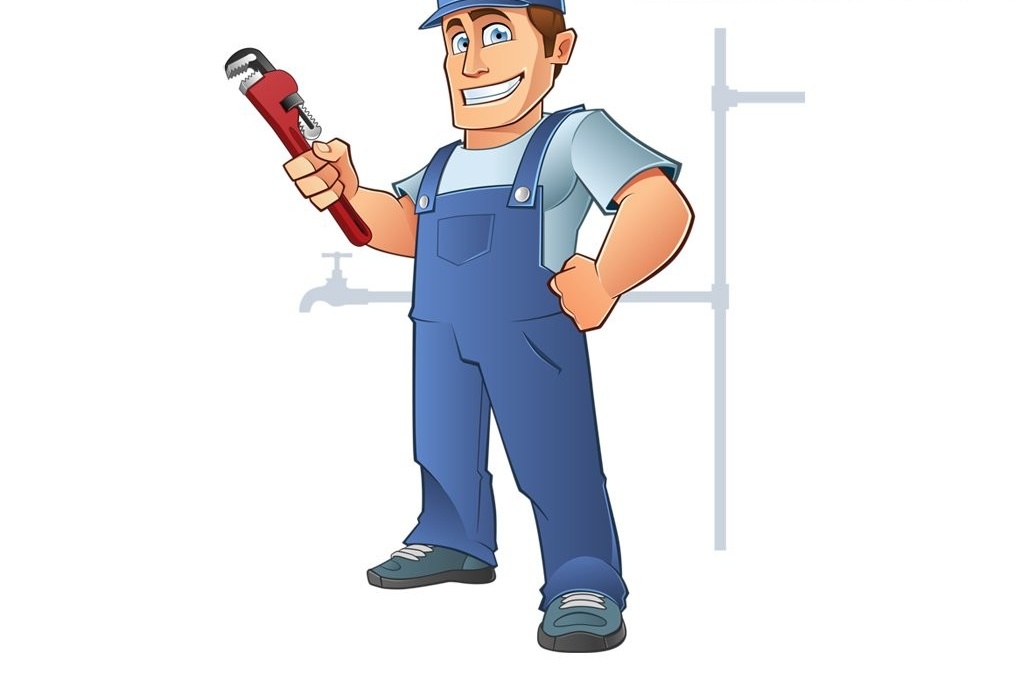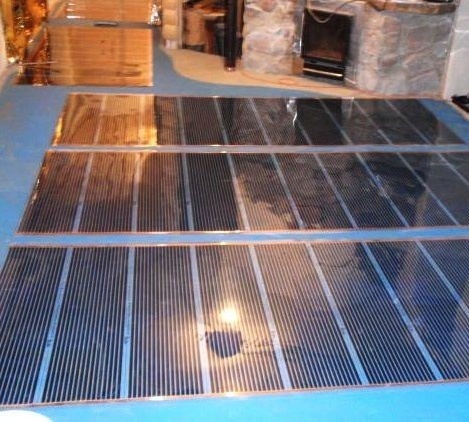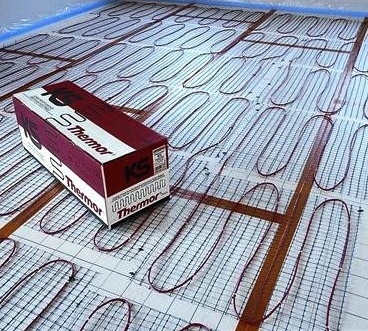Combined heating: building a system of “radiators plus underfloor heating”

Thermal comfort is the main thing that worries home owners in winter and in the offseason. In recent years, combined heating has become increasingly popular: radiators plus underfloor heating. Such a system is as efficient as possible, convenient in operation, and trouble-free. Having installed it, the owner of the house expands his own capabilities: it becomes easier to control the temperature regime, in case of malfunctions there is always a backup option, and the amount for heating is not higher than usual. With the right choice of scheme, energy sources and heating devices, you can achieve significant savings in paying bills for energy.
Content
Where can combined systems be made?
If the flooring and the type of underfloor heating system are correctly selected, then combined heating can be installed in rooms of any purpose and buildings of any number of storeys. This is a great option for two-story residential buildings. When arranging a warm floor on the first floor, streams of warm air rise up, warm the entire floor and floors, serving as a floor for rooms on the second floor where radiators are installed.
It is best to use ceramic tiles as the floor covering for the warm floor of the first floor. For bedrooms on the second floor, you can choose any flooring. If you install thermostats, it will be easy to maintain the desired temperature depending on the time of day. For example, during the day you can set a lower temperature, and in the evening and night - a higher.
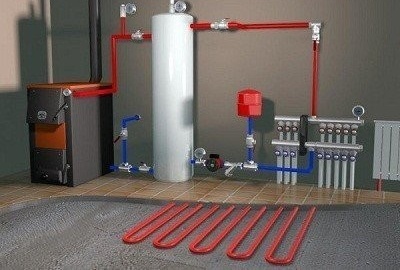
An approximate scheme of combined heating of a two-story house. It is assumed that the underfloor heating will be installed only on the first floor, and the second will be heated by radiators. Other options are possible.
The ideal option is if the arrangement of the combined system was originally laid down in the project of an apartment building. But, as a rule, such an ideal is unattainable; you have to start from realities and take into account limitations. It is not possible to equip the apartment with underfloor heating if it is planned to take the heat carrier from centralized heat and water supply systems, but it is possible to install systems with heat exchangers.
To organize underfloor heating in the apartment, it is necessary to coordinate the project with the competent services. This is an additional time expense. It is also important to determine the type of coating that will be laid on warm floors. Specialists recommend a laminate or tile. Parquet and carpet are not suitable for water underfloor heating.They are good heat insulators and reduce the efficiency of the system.
Linoleum is an option that it makes sense to consider only if there is a financial opportunity to buy truly high-quality material. Cheap types of linoleum are made from synthetic raw materials. When heated, the material may release toxic substances into the atmosphere. This is potentially dangerous for the health of people living in the apartment.
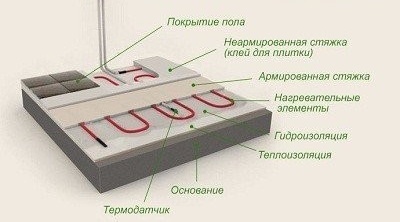
In apartments of high-rise buildings often install electric heated floors as an addition to a centralized heating system with radiators. In making this decision, the owner should evaluate how much the wiring can withstand the additional load.
You will also find useful material about the layout of the heating system in the house:https://aquatech.tomathouse.com/en/otoplenie/razvodka-otopitelnoj-sistemy/sxema-otopleniya-v-chastnom-dome.html.
Which heating appliances to choose?
For gasified settlements, this issue is not relevant, since gas has been and remains the cheapest and most affordable fuel. Installing a high-quality condensing boiler solves the problem. But in areas where there is no highway nearby, the choice usually comes down to solid or liquid fuel.
Liquefied gas, as practice shows, is not an option, because heating is too expensive no matter how economical the boiler is. But "for safety reasons" you can buy a gas model, which is easy to convert under heating with liquefied gas, simply changing the nozzle.
If the owner of the house has the opportunity to buy diesel fuel below market value, then oil boiler - A good option for heating a large area home. If this is not possible, it is best to stay on a solid fuel boiler for long burning.
When designing a heating circuit with underfloor heating and radiators, it must be borne in mind that floor heating is more economical. But this does not mean that radiators are useless. Their task is to create a thermal curtain near the windows and prevent the cooling of the house. With the right choice of system elements and thoughtful control, heating will be as efficient as possible and at the same time relatively inexpensive.
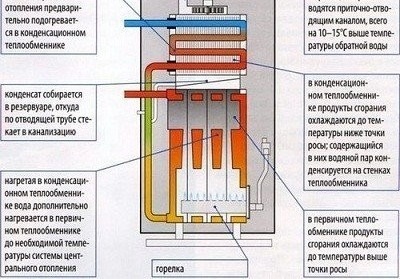
Condensing boiler - the most profitable solution for a private house. The efficiency of devices is significantly higher than conventional boilers, and fuel is used more economically. Condensation models are volatile because equipped with electronic ignition systems. Additionally, heating is equipped with pumps for forced circulation of the coolant
Water or electric floor - which is better?
If we consider the systems from the point of view of efficiency, then they are approximately the same, provided that they are designed and installed without gross errors. The main issue is the cost of systems. Equipment water floor heating more expensive than electric, but in operation these systems are cheaper.
Issues of purchase and installation are solved only once, and for heating you have to pay 7 months a year. Therefore, many owners of private houses opt for water systems. The most rational option is to install a gas condensing boiler, water floor and heating radiators with high heat transfer rates.
In multi-apartment buildings with central heating, designing and arranging a water floor is fraught with certain difficulties, and the cost of installing and operating the system depends on the chosen scheme.
Owners of apartments in high-rise buildings often connect an electric underfloor heating - a two-wire electric cable, carbon mats or infrared film. Fortunately, in the modern heating equipment market, you can find acceptable options. An additional plus of electric floor heating is simple installation.
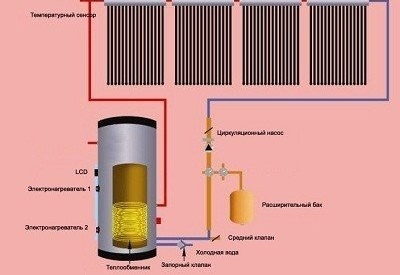
The arrangement of a two-pipe heating system requires significant financial costs for materials and components, so many homeowners design single-pipe.They also cope with their functions, but if the house is large, it is better not to save on a heating system
Installation of a carbon floor in an apartment - video instruction
In apartments with centralized radiator heating, carbon floors are often installed. They are chosen because of the ease of installation and cost-effectiveness. How to lay the carbon floor in the apartment is shown in the video instruction attached below:
Warm floor in a two-story house - training film
How to make a warm floor in a 2-storey building, you can learn from the training film:
A few words about the choice of radiators
The most "fashionable" radiators - bimetallic and aluminum. They are distinguished by good heat dissipation, they look good, and bimetal also lasts for many years. Steel is inferior to aluminum and bimetal in all respects, but the good old cast iron is a perfectly acceptable option. When choosing, one should focus not only on heat transfer indicators, but also on the resistance of materials to corrosion, durability.
The easiest way to choose radiators for a private house with autonomous heating. The owner can control the quality of the coolant himself, and there are no powerful hydraulic shocks in the system. For home, you can choose any type of radiator. Cast iron - cheaper and more durable, but more complex installation and less economical. Aluminum will cost more and last less, but the devices from it are heat efficient and very beautiful.
If you plan a combined system in a house or apartment with central heating, then the choice is small - either bimetal, or cast iron. Heating devices made of these materials adequately cope with water shocks and the effects of chemically active coolant.
If means allow, it is better to stop on bimetallic models. The best European brands are Sira, Global Style, Radena, Regulus-system. Radiators of these brands are adapted for the market of the CIS countries. Among Russian manufacturers, Rifar is unrivaled. All models are assembled from quality materials using Western technologies. The Rifar Monolit model is especially popular, its characteristics are not inferior to the best "Italians", but much cheaper.
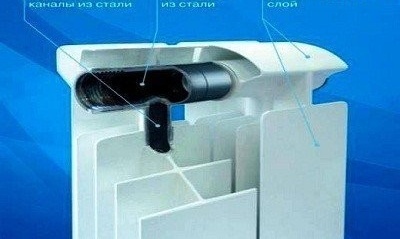
Thanks to the successful combination of materials, bimetallic models are durable, resistant to all types of influences and effective. When you turn on the heating, they immediately begin to give off heat, because the coolant volume is small and the case warms up almost instantly. "Bonus" - a stylish appearance
Pipes for underfloor heating and radiators
For a water heated floor, it is better to choose pipes made of cross-linked polyethylene. They are sold in bays, which simplifies transportation. They are easy to install, strong and durable. Cross-linked polyethylene pipes can be mounted in a screed. They do not need to be laid strictly in a straight line, since the products are flexible.
The advantages of polypropylene pipes for radiator connections - low cost and ease of installation. For installation, you will need special nozzles, a chamfer, a device for socket welding. If pipes with aluminum reinforcement are selected, then a shaver will also be needed. To equip the system, shutoff valves are also needed.
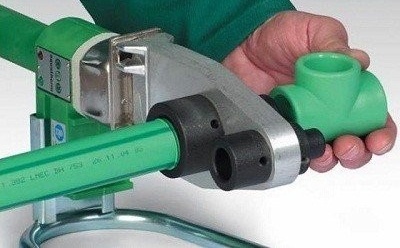
When installing polypropylene pipes, it is important to properly heat the pipes and fittings themselves. When overheated, the material can deform and lose its properties. There are special tables by which you can determine the optimal heating time of pipes
If you have not yet decided what kind of heating to do in your home, pay attention to the material about the one-pipe system, its pros and cons, installation technology:https://aquatech.tomathouse.com/en/otoplenie/razvodka-otopitelnoj-sistemy/odnotrubnaya-sistema-otopleniya.html.
Arrangement of a gas boiler system
The main difficulty is the organization of wiring along two circuits with different coolant temperatures. The most rational options are a serial connection or a water arrow. Serial connection is more economical, and the hydraulic arrow is practical, becauseits use will allow to achieve optimal operation of the condensing boiler. A heat carrier of a lower temperature will enter the floor heating circuit than radiators.
The temperature of the heating devices is automatically regulated, as they cool down, circulation pumps must be started in each of the circuits. To stop one of the circuits, just turn off the pump. For the minimum inertia of the system, pipes with a small internal section are chosen, optimally 20 mm.
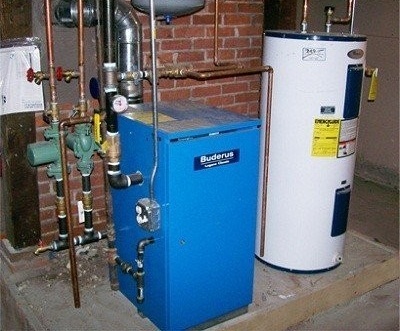
Gas heating equipment is installed in separate rooms. The height of the ceilings in the boiler room should be at least 2 m, and the volume of the room should be at least 7.5 m3. Be sure to take care of ventilation.
A detailed description of the connection scheme for combined heating with underfloor heating and radiators is in the video below:
Heating system with solid fuel boiler
When connected solid fuel boiler The heating circuit with a warm floor and radiators is mounted as a closed gravity with a heat accumulator. It can be single or double pipe. It is advisable to install a throttling stop valve on each of the heating devices.
It is better not to limit the heat transfer of a solid fuel boiler, since this will cause incomplete burning of fuel and, as a result, uneconomical consumption. The heat accumulator is needed so that the water in the system does not overheat. The coolant circulation stops after burning fuel in the boiler.
As the water cools in the system, it is supplied from the heat accumulator to the circuit with radiators. When a power failure occurs, the valve cuts off the flow of heat accumulator and opens bypass.
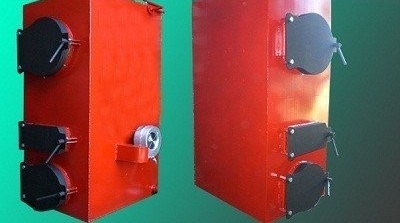
The pyrolysis boiler is perfect for organizing a combined heating system. It is reliable and economical. Thanks to the two-stage combustion system, fuel consumption is significantly reduced. When using such a boiler, less combustion products are released, which helps to save the environment.
Several available wiring options can be seen in the video:
One of the commonly used heating systems is a two-pipe. In our next article, you will learn about the principles of the device and work, how to calculate correctly, and other features:https://aquatech.tomathouse.com/en/otoplenie/razvodka-otopitelnoj-sistemy/dvuxtrubnaya-sistema-otopleniya-chastnogo-doma.html.
Each owner of the house chooses the best combination of heating equipment on their own. When making the final decision, one should take into account the needs, personal preferences, the availability and cost of fuel, the connection scheme, the consumption of materials for the arrangement of the system. There are several selection criteria. If there is any doubt that you can cope with the design and installation of heating, contact a specialist for help.
